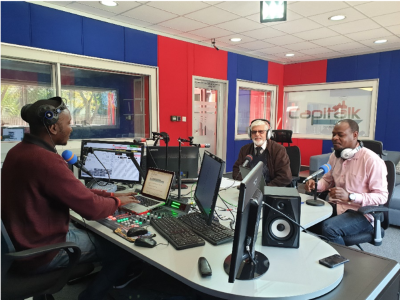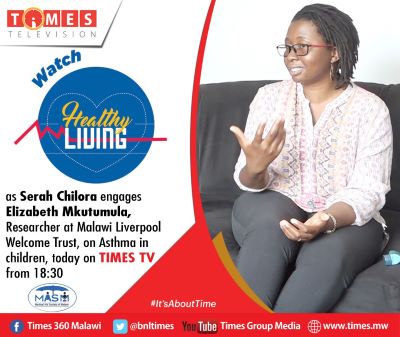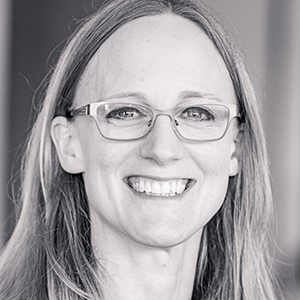
Published: 29 October 2020
Dr Gioia Mosler, Head of the Global Health Group and Community Engagement, Queen Mary University of London, writes about how she has been developing public engagement as part of a NIHR Global Health Research group which is working to improve asthma outcomes in children in Africa.
Over the past few years I have worked on developing public engagement for a scientific project about young people’s respiratory health in sub-Saharan Africa. The ACACIA (Achieving Control of Asthma in Children in Africa) study involves young people with asthma symptoms in urban areas of six countries. The study aims to understand the burden asthma imposes on urban African school children, and is looking at factors that may contribute to poor asthma outcomes.
There is limited information available about public engagement for international projects involving the Global South. Yet, we have now established public health agendas at all of ACACIA’s six sites including multiple highly successful events that engage with a variety of communities.
My passion for public engagement
Our journey started two and a half years ago, when I was delighted to get the position to manage the ACACIA project, a NIHR Global funded group. Yet, I had a niggling worry this position would not allow much time to pursue my long time passion for public engagement of science. I had started to engage with the public about air pollution and health alongside my PhD, and continued to design scientific workshops, games and films for the public during my work in the following years.
From the beginning however, ACACIA’s funder was encouraging the involvement of community. The new challenge I faced was how to get an engagement agenda started remotely across six African research sites. How much guidance might they need? Do they have any training needs? Shall we pursue a common agenda, or should the sites have their own engagement plans? After the first busy months filled with contract negotiations, ethical approvals, and team building, I finally got a chance to talk to our African partners about public engagement at our first annual meeting in June 2019. I started to introduce the idea of Community Engagement and Involvement (CEI) with the goal to generally encourage CEI activities as part of the project.
Local success stories
Following the meeting, stories emerged about exciting activities at our African sites, engaging and involving the local community with a variety of different approaches. In Ghana for example children from seven different local schools joined the local launch event for lectures and a Q&A session on respiratory health. Other stories came to light, for example about interactive booths on the World Asthma Day, organised by our partner in Malawi, and open-air parent meetings in Nigeria. All six centres had found their own way to engage the community in their research. These events were great local successes with often large audiences and media coverage. I was delighted!
An idea formed in my head that what was needed was not a guideline or basic training about how to do CEI. Rather, I wanted to create a local focus point for engagement and therefore created the role of engagement lead at each site. I also felt that impact and recognition could be strengthened with a more structured approach. Recorded evidence about engagement and involvement of communities could then be leveraged to widen impact locally and regionally. I decided to put in place a guideline designed to be practical, and focused on structuring the process: ACACIA Practical Guidelines for Public Engagement

The challenges of COVID-19
Just when the new guidelines were sent out and the first meetings of engagement leads had taken place however, we were hit by our next challenge in form of COVID-19. The virus seemed so at odds with the idea of engaging the community, that it stopped our thoughts in their tracks for a few weeks. Yet, our team of engagement leads recovered quickly and is back with great ideas how to adapt their engagement through online events and radio, testimony to their resilience and creativity.

Our Engagement Lead for Malawi, Eliza Mkutumula says: “Engagement is key in research because it fosters trust between researchers and the community, leading to the generation of reliable and meaningful data - a win-win for research and the local population.”

Sindi Dladla, Engagement Lead for South Africa, states: ‘Engagement is a space where knowledge, experiences and ideas are shared. A space where both the researcher and participants can be the expert.”
Developing the public engagement strategy for ACACIA has been an exciting and wonderful journey so far, and I am looking forward to continuing to shape ACACIA’s public engagement agenda with our partners in the coming years.
If you would like to hear more about our work please visit our ACACIA website, or follow us on Twitter - @AcaciaStudy.
Find out more about the NIHR Global Health programme and funding opportunities.

Dr Gioia Mosler, Head of Global Health Group and Community Engagement, NIHR Global Health Research Group on improving asthma outcomes in African children at Queen Mary University of London

